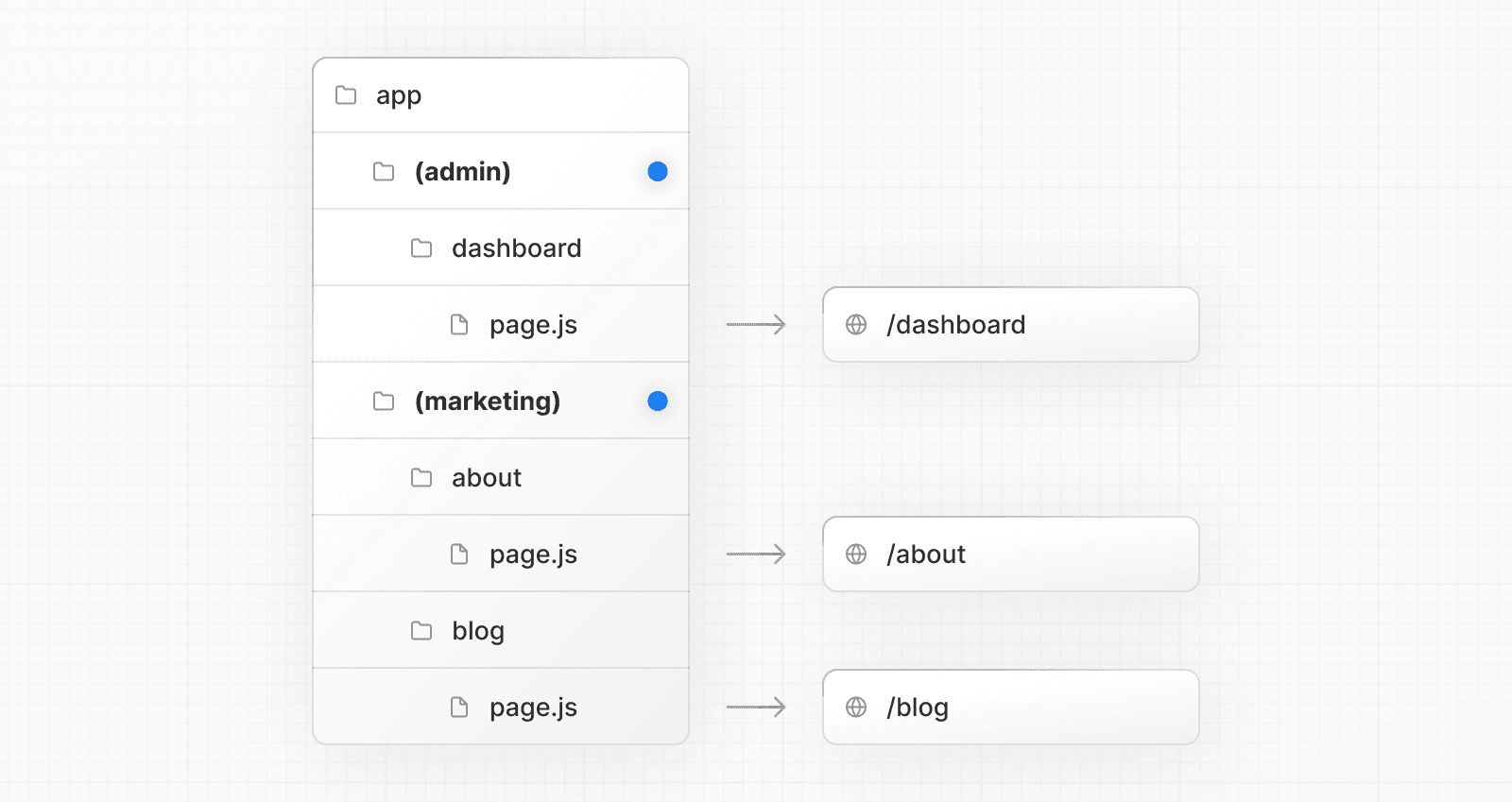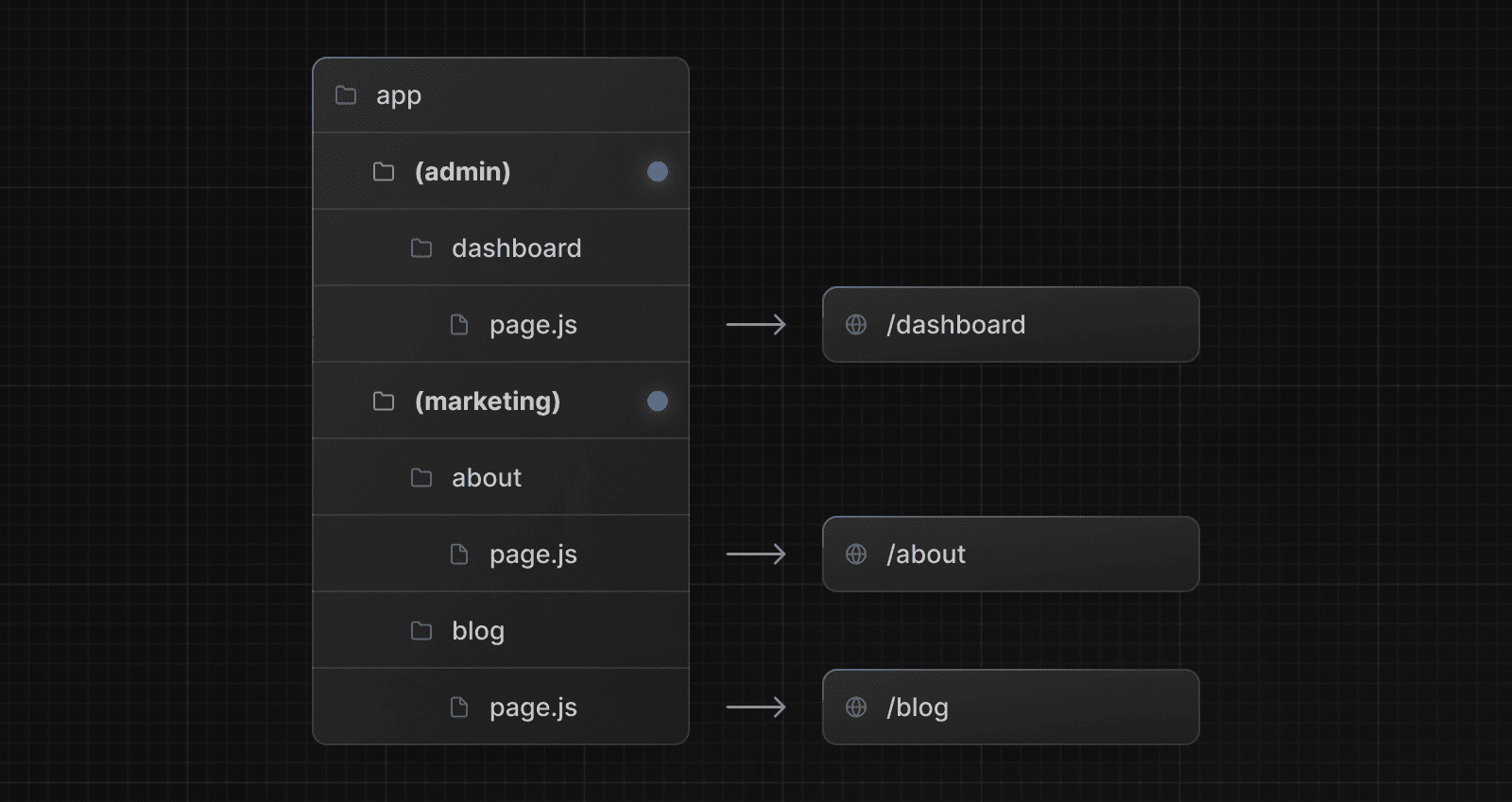Route Groups
Last updated June 16, 2025
Route Groups are a folder convention that let you organize routes by category or team.
Convention
A route group can be created by wrapping a folder's name in parenthesis: (folderName).
This convention indicates the folder is for organizational purposes and should not be included in the route's URL path.

Use cases
- Organizing routes by team, concern, or feature.
- Defining multiple root layouts.
- Opting specific route segments into sharing a layout, while keeping others out.
Caveats
- Full page load: If you navigate between routes that use different root layouts, it'll trigger a full page reload. For example, navigating from
/cartthat usesapp/(shop)/layout.jsto/blogthat usesapp/(marketing)/layout.js. This only applies to multiple root layouts. - Conflicting paths: Routes in different groups should not resolve to the same URL path. For example,
(marketing)/about/page.jsand(shop)/about/page.jswould both resolve to/aboutand cause an error. - Top-level root layout: If you use multiple root layouts without a top-level
layout.jsfile, make sure your home route (/) is defined within one of the route groups, e.g. app/(marketing)/page.js.
Was this helpful?
